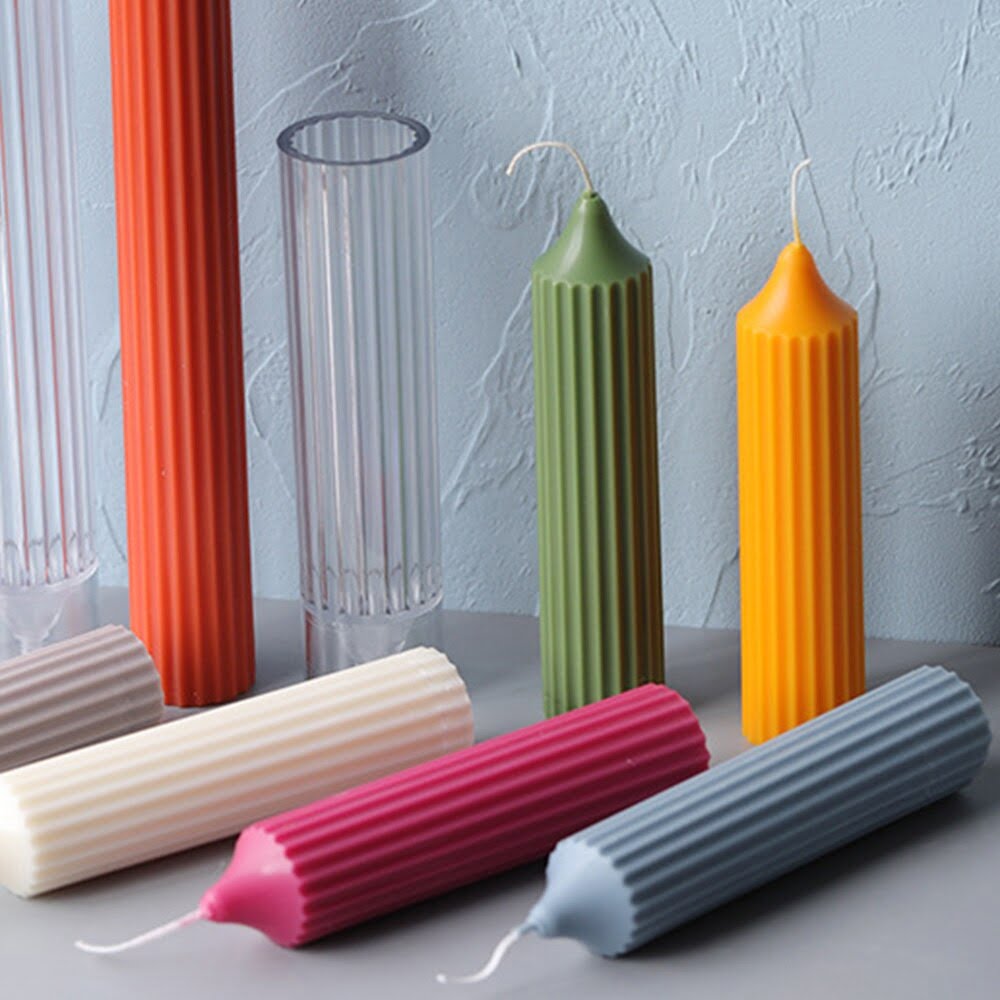Candle making is an age-old craft that continues to captivate people due to its creativity and therapeutic benefits. However, amidst the joy of creating beautiful candles, there is a crucial factor that cannot be overlooked – the flashpoint. The flashpoint plays a significant role in candle making as it determines the safety and quality of candles.
In this article, we will delve into the world of candle making and explore the concept of flashpoint. We will uncover its basics, unravel the chemistry behind it, and understand how it affects candle safety. Additionally, we will discuss essential tools and techniques for identifying the flashpoint and factors that influence its ignitability.
Understanding flashpoint is essential for navigating legal regulations and standards associated with candle making. We will explore guidelines specific to flashpoints and delve into methods for testing them accurately. Moreover, we will discuss variations in wax and oil combinations that result in different flashpoints for various candle types.
By acquiring a comprehensive understanding of flashpoint, candle makers can enhance their skills by incorporating this knowledge into their craft. Empowered with this awareness, they can create candles that are not only visually appealing but also meet safety standards.
Join us on this journey as we empower candle makers with an understanding of flashpoint – a vital aspect in ensuring safe and high-quality candles.
What is Flashpoint in Candle Making
Flashpoint is a crucial concept in candle making that determines the safety and performance of candles. In this section, we will delve into the basics of flashpoint and explore its significance in the candle making process.
Flashpoint refers to the lowest temperature at which a substance gives off vapors that can ignite when exposed to an open flame or spark. In the context of candle making, it is important to understand the flashpoint of each ingredient used, including waxes, oils, and fragrances. This knowledge helps candle makers create candles that are not only visually appealing but also safe to use.
When choosing ingredients for candles, understanding the flashpoint is vital as it directly impacts their burn rate and safety. A low flashpoint means that the ingredient has a higher chance of igniting when exposed to heat or open flames. On the other hand, ingredients with a high flashpoint are less likely to catch fire easily.
To ensure safety while creating candles, it is recommended to use ingredients with high flashpoints and avoid those with low flashpoints. By doing so, candle makers can minimize the risk of accidents such as sudden flare-ups or explosions during burning.
| Ingredient | Flashpoint (in Fahrenheit) |
|---|---|
| Soy Wax | ~500°F |
| Paraffin Wax | ~370-400°F |
| Coconut Oil | ~350°F |
As shown in the table above, soy wax has a higher flashpoint compared to paraffin wax and coconut oil. This makes soy wax a safer option as it is less prone to ignition. By being aware of the flashpoints of various ingredients, candle makers can make informed decisions in selecting materials that are appropriate for their desired candle.
In the next section, we will explore how flashpoint affects the safety of candles in more detail, including the potential risks associated with using ingredients with low flashpoints.
Unraveling the Chemistry
Flashpoint is a crucial factor to consider in candle making as it directly impacts the safety of the finished product. Understanding the chemistry behind flashpoint can help candle makers ensure that their candles are safe for use.
The flashpoint of a substance is defined as the lowest temperature at which it can vaporize to form an ignitable mixture in the air near its surface. In the context of candle making, this refers to the temperature at which the fragrance oils and waxes used in candles can potentially ignite.
When a candle is burning, heat is applied to the wax, causing it to melt and release volatile compounds into the air. If these compounds reach their flashpoint temperature, they can ignite and cause a fire hazard. This is why it is essential for candle makers to be aware of the flashpoint of each ingredient they use.
Additionally, understanding flashpoint can help candle makers choose appropriate containers and wicks for their candles. Different materials have different levels of heat resistance, so using containers and wicks that can withstand high temperatures beyond the flashpoint of the ingredients used in the candle can prevent accidents.
To ensure safety in candle making, it is important to always use materials with flashpoints higher than the expected operating temperature of a candle. Furthermore, proper handling and storage practices should be observed to minimize any potential hazards associated with flashpoint.
Identifying the Flashpoint
When it comes to candle making, it is crucial to have a clear understanding of the flashpoint of different ingredients. The flashpoint refers to the temperature at which a substance vaporizes and can ignite when exposed to an open flame or spark.
Identifying the flashpoint is essential for ensuring the safety of both the candle maker and the end-user. In this section, we will explore the essential tools and techniques that candle makers can use to accurately identify the flashpoint of their candle ingredients.
One of the primary tools used in identifying the flashpoint is a flash point tester, also known as a flash point apparatus. This device measures the lowest temperature at which vapors from a sample of material ignite momentarily upon exposure to an open flame or spark.
It consists of a metal cup where the sample is placed, an ignition source such as a pilot flame or electric arc, and a thermometer for recording temperature changes. The flash point tester provides precise measurements that help determine whether or not certain ingredients are suitable for candle making.
In addition to using specialized equipment like flash point testers, there are also certain techniques that candle makers can employ in order to identify the flashpoint of their ingredients accurately. One such technique is known as “tagliabue closed-cup method.”
This method involves placing a small amount of sample material in a closed cup apparatus and gradually increasing its temperature until it ignites momentarily when an ignition source is introduced. The temperature at which ignition occurs is then recorded as the flashpoint.
It should be noted that while identifying the flashpoint is crucial for ensuring safety in candle making, it should not be relied upon as the sole determinant of whether or not an ingredient should be used. Other factors such as melting point, scent throw, and burn characteristics should also be taken into consideration.
By having a comprehensive understanding of all these factors and using proper tools and techniques to identify the flashpoint, candle makers can create candles that are both safe and high-quality.
Factors Affecting Flashpoint
Flashpoint is an essential aspect of candle making that determines the safety and ignitability of various ingredients used in the process. The flashpoint of a substance is the temperature at which it emits enough vapor to ignite when exposed to an open flame or spark. Several factors influence the flashpoint of candle ingredients, including the type of wax and oils used, as well as any additives or fragrances incorporated.
One key factor that affects flashpoint is the type of wax being used. Different waxes have different flashpoints, with some having lower flashpoints than others. For example, paraffin wax generally has a lower flashpoint compared to soy wax or beeswax. This means that candles made using paraffin wax may have a higher risk of igniting compared to those made using soy or beeswax.
Additionally, the type and amount of oils used in candle making can also impact the flashpoint. Certain oils have higher flashpoints than others, making them more suitable for use in candles. It is important for candle makers to consider the flashpoints of their chosen oils and ensure they are within safe limits. Using oils with low flashpoints can increase the risk of fire hazards and should be avoided.
Another factor influencing flashpoint is the presence of additives or fragrances within candle ingredients. These additives can affect both the ignitability and overall safety of candles. Some additives may decrease the flashpoint, while others may increase it. Candle makers should carefully research and select their additives and fragrances to ensure they do not significantly alter the overall safety profile of their candles.
| Factors Affecting Flashpoint | Influences on Ignitability |
|---|---|
| Type of wax | Different waxes have different flashpoints, with some having lower flashpoints than others. |
| Type and amount of oils used | Certain oils have higher flashpoints than others and should be carefully considered to ensure safe use. |
| Additives and fragrances | The presence of additives can impact the ignitability and overall safety of candles, with some additives potentially decreasing the flashpoint. |
Flashpoint versus Safety
In the world of candle making, understanding the concept of flashpoint is crucial for ensuring both the quality and safety of your creations. The flashpoint of a candle refers to the minimum temperature at which its vapors can ignite when exposed to an open flame or spark. While it is important to achieve a desirable flashpoint to create candles that burn properly, it is equally vital to prioritize safety throughout the process.
One way to strike a balance between achieving the desired flashpoint and maintaining safety is by carefully selecting and measuring your ingredients. Different waxes and oils have varying flashpoints, and understanding these variations can help you choose suitable materials. For instance, some vegetable-based waxes like soy or coconut oil have lower flashpoints compared to paraffin wax. Therefore, if you prefer using vegetable-based waxes, be sure to consider their associated flashpoints when formulating your candle recipes.
Another key factor in balancing flashpoint and safety is following recommended guidelines and standards set by regulatory bodies such as the National Candle Association (NCA) or International Fragrance Association (IFRA). These organizations provide valuable resources on safe practices in candle making, including maximum usage rates for fragrance oils and essential oils based on their specific flashpoints. Adhering to these guidelines helps ensure that your candle formulations meet industry standards while minimizing potential hazards.
To accurately determine the flashpoint of your candles, there are several testing methods available. The most common technique involves using a small-scale closed-cup apparatus like a Pensky-Martens tester or Tagliabue closed-cup tester. These devices allow you to heat up a sample of your candle material gradually until vapor ignites temporarily with a flame application. By recording this temperature, you can identify the exact flashpoint of your formulation.
Striking a balance between achieving an optimal flashpoint and ensuring safety is paramount in candle making. By understanding the flashpoint concept, selecting appropriate ingredients, following recommended guidelines, and conducting accurate testing, candle makers can create high-quality products while prioritizing the safety of themselves and their customers.
Flashpoint Guidelines
When it comes to candle making, understanding the flashpoint of your materials is not only crucial for safety but also for complying with legal regulations and standards. Flashpoint guidelines play an important role in ensuring that candles are produced and sold safely, while also protecting consumers and the environment.
Legal regulations regarding flashpoints vary across different countries and regions. In the United States, for example, the Consumer Product Safety Commission (CPSC) has established specific guidelines for flashpoints in candles. According to these guidelines, the flashpoint of a candle must be no lower than 200 degrees Fahrenheit (93 degrees Celsius). This ensures that the candle will be stable during normal use without emitting excessive amounts of volatile compounds.
Complying with legal regulations is essential for any candle maker or seller. Failure to meet these standards can result in fines or even legal action. Therefore, it is crucial to accurately determine and label the flashpoint of your candles before marketing them. This can be done through testing by using proper equipment and following appropriate methods.
| Country/Region | Flashpoint Guidelines |
|---|---|
| United States (CPSC) | Flashpoint must be no lower than 200°F (93°C) |
| European Union (EU) | Flashpoint must be no lower than 65°C |
| Australia | Maximum allowable flashpoint varies depending on the type of candle product |
It is important to note that these guidelines are subject to change and may vary based on the specific regulations in your country or region. Therefore, it is recommended to stay updated on the latest requirements and ensure compliance with all applicable laws and standards. By doing so, candle makers can create and sell their products with confidence, knowing that they are meeting legal requirements and prioritizing the safety of their customers.
Testing for Flashpoint
Understanding the flashpoint of candle ingredients is crucial in ensuring the safety and quality of candles. This section will delve into the methods and importance of testing for flashpoint in candle making.
Methods for Testing Flashpoint
There are several methods available to determine the flashpoint of candle ingredients. The most common method is the Tagliabue Closed Tester, which involves heating a small amount of the ingredient in a closed cup apparatus until it ignites. The temperature at which ignition occurs is recorded as the flashpoint. Another method is the Pensky-Martens Closed Cup, where a similar procedure is followed, but with slight variations in apparatus design.
Aside from these closed-cup methods, there are also open-cup tests such as the Cleveland Open Cup and Abel Closed Tester. These tests involve heating the sample in an open container until its vapors ignite. Both open and closed cup methods have their advantages and limitations, so it is important to consider which method is more appropriate for specific candle-making situations.
The Importance of Flashpoint Testing
Testing for flashpoint goes beyond mere compliance with legal regulations and standards; it plays a crucial role in ensuring the safety of candles during manufacturing, transportation, and use. By knowing the flashpoint of each ingredient used, candle makers can take necessary precautions to prevent accidents or hazards caused by flammable materials.
Flashpoints give insight into how quickly an ingredient may catch fire when exposed to an ignition source. Combining ingredients that have lower flashpoints may increase the overall ignitability of a candle, posing higher risks during manufacturing or use. Therefore, conducting flashpoint testing allows candle makers to make informed decisions about ingredient combinations and reduce potential fire hazards.
Furthermore, knowing the flashpoints of different ingredients enables more precise control over burning characteristics. Certain fragrances may have lower flashpoints that affect how they evaporate and interact with the flame, potentially altering the scent throw and burning qualities of the candle. By conducting flashpoint tests, candle makers can ensure consistency and quality in their products.
Flashpoint for Different Candle Types
Introduction to Flashpoint for Different Candle Types
When it comes to candle making, it is important for candle makers to have a thorough understanding of the flashpoint, especially when using different types of waxes and oils. The flashpoint is the temperature at which a combustible material, such as a wax or oil, gives off vapors that can ignite when exposed to an open flame or spark.
Each type of wax or oil has its own unique flashpoint, which can greatly impact the safety and performance of the finished candle.
Understanding Variations in Waxes
Different waxes have different flashpoints due to their composition. For example, paraffin wax typically has a lower flashpoint compared to soy wax. Paraffin wax has a flashpoint range between 110-150 degrees Fahrenheit (43-66 degrees Celsius), while soy wax generally has a higher flashpoint range between 125-180 degrees Fahrenheit (52-82 degrees Celsius).
It is important for candle makers to take note of these variations in order to select the appropriate type of wax for their desired outcome. Higher flashpoint waxes like soy are often preferred for safety reasons, as they are less likely to release flammable vapor when exposed to heat. However, paraffin wax may be preferred by some candle makers due to its affordability and ability to hold fragrance better.
Understanding Variations in Oils
Similar to waxes, different types of oils used in candle making also have varying flashpoints. Fragrance oils and essential oils play an important role in candle making as they provide scent and sometimes color. It is crucial for candle makers to consider the flashpoint of these oils when incorporating them into their candles.
Fragrance oils and essential oils can have flashpoints ranging from as low as 100 degrees Fahrenheit (37 degrees Celsius) up to around 200 degrees Fahrenheit (93 degrees Celsius) or higher. Candle makers must be aware of the flashpoint of the oils they are using and ensure that it aligns with the flashpoint of their wax to prevent any safety hazards.
Overall, understanding the flashpoint for different candle types is essential for candle makers to create safe and successful candles. By carefully selecting waxes and oils with compatible flashpoints, candle makers can ensure that their candles burn properly without posing a fire risk.
Putting Knowledge into Practice
The Importance of Flashpoint Awareness in Candle Making
Understanding the concept of flashpoint and its implications is crucial for candle makers who want to produce safe and high-quality products. By being aware of the flashpoint, candle makers can make informed decisions about the ingredients they use and minimize the risk of fire hazards.
Additionally, having knowledge about flashpoints allows candle makers to comply with legal regulations and standards, ensuring their candles meet safety requirements. Therefore, enhancing candle making skills with flashpoint awareness is essential for both hobbyists and professional candle makers.
Choosing Safe Ingredients: The Role of Flashpoint
One way to enhance candle making skills with flashpoint awareness is by understanding how different ingredients contribute to the overall safety of a candle. Each ingredient used in candle making has its own specific flashpoint, which is affected by factors such as wax type, fragrance oils, additives, and dyes. By knowing the flashpoints of these ingredients, candle makers can select materials that are suitable for their desired outcome and ensure they are using safe combinations.
It is important to note that using ingredients with higher flashpoints does not automatically guarantee safety. Candle makers must also consider potential interactions between different components that can affect the overall ignitability of the final product.
For example, certain fragrance oils may have a lower flashpoint than the base wax being used, which can increase the risk of fire hazards if not properly managed. Therefore, it is crucial for candle makers to strike a balance between achieving desired aesthetics and ensuring safety by considering both individual ingredient flashpoints and their compatibility.
Preventing Fire Hazards: Best Practices in Candle Making
Enhancing candle making skills with flashpoint awareness goes beyond simply understanding what it means or choosing safe ingredients. It also involves implementing best practices to prevent fire hazards during the production process. Some key considerations include using appropriate containers or molds that can withstand high temperatures, properly measuring and mixing ingredients to avoid overheating, and ensuring proper ventilation in the workspace.
Moreover, candle makers should also familiarize themselves with relevant legal regulations and standards regarding flashpoints. These guidelines may include restrictions on certain ingredients with low flashpoints or specific labeling requirements. By following these regulations and implementing appropriate safety measures, candle makers can ensure that their products are not only visually appealing but also safe for use.
Conclusion
In conclusion, understanding the concept of flashpoint is crucial for candle makers in ensuring the safety and quality of their products. By unraveling the basics of flashpoint and its impact on candle safety, candle makers can make informed decisions regarding the selection and usage of ingredients. Additionally, having the necessary tools and techniques to accurately identify flashpoint values allows candle makers to adhere to legal regulations and standards.
It is important to recognize that various factors can influence the ignitability of candle ingredients and ultimately affect flashpoint. From the type of wax used to the specific oils added for fragrance, each component must be carefully considered in order to strike a balance between achieving desired properties and maintaining safety.
Testing for flashpoint is an essential step in the candle making process. Methods such as using a flashpoint tester or consulting reliable resources can provide valuable information about the temperature at which a substance will ignite. This knowledge empowers candle makers to make informed choices when formulating their candles.
Different types of candles may have variations in flashpoints based on the waxes or oils used. It is important for candle makers to understand these differences and adjust their processes accordingly. With a solid understanding of flashpoint, candle makers can enhance their skills and create high-quality, safe candles that meet customer expectations.
Frequently Asked Questions
What is the best flash point for candles?
The best flash point for candles depends on the type of wax being used and the specific requirements of the candle. Flash point refers to the lowest temperature at which a substance gives off enough vapor to ignite when exposed to an open flame or spark.
For most candle waxes, including paraffin wax and soy wax, a flash point around 200-220 degrees Fahrenheit (93-104 degrees Celsius) is considered ideal. This range allows the candles to burn safely and evenly without risk of excessive heat or potential fire hazards.
What is the flash point of wax?
The flash point of wax varies depending on its composition and specific type. Generally, traditional paraffin wax has a flash point between 370 and 425 degrees Fahrenheit (188-218 degrees Celsius), making it relatively safe for use in candles.
Paraffin wax is derived from petroleum and undergoes refining processes to remove impurities, resulting in a more controlled flash point. However, it’s important to note that different grades and additives can affect the flash point of paraffin wax, so manufacturers should always adhere to proper guidelines and safety precautions.
What is the flashpoint of soy wax?
Soy wax is a popular alternative to paraffin wax due to its renewable nature and cleaner-burning properties. The flashpoint of soy wax typically ranges between 500 and 600 degrees Fahrenheit (260-316 degrees Celsius). It has a higher flash point compared to paraffin wax, which can be attributed to soybeans’ natural lower volatility compared to petroleum-based products like paraffin.
This higher flash point contributes to the safety of soy-based candles by reducing risk during manufacturing, transportation, and burning phases. Additionally, many candle makers appreciate that soy wax provides longer burn times while emitting fewer toxins into the air when compared with traditional waxes.

Welcome to my candle making blog! In this blog, I will be sharing my tips and tricks for making candles. I will also be sharing some of my favorite recipes.





